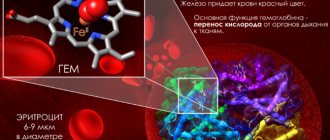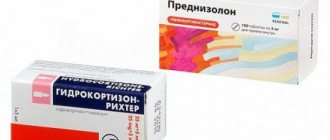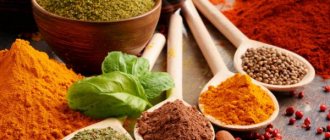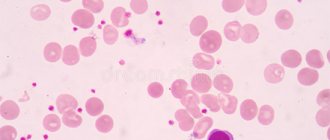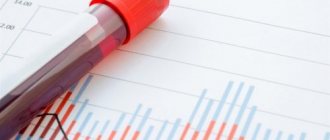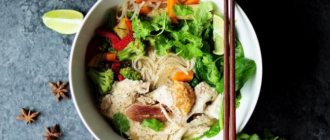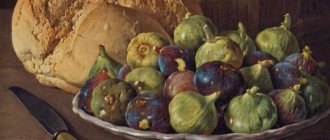General rules
Arterial hypotension ( hypotension ) is considered to be a state of low blood pressure , in which stable systolic blood pressure is below 90, and diastolic blood pressure is below 60 mm Hg.
Art. This condition can be either a physiologically normal phenomenon (with a hereditary predisposition) or pathological (primary and secondary hypotension). Primary hypotension, which most often manifests itself in the form of neurocirculatory asthenia , is an independent disease caused by the influence of negative psycho-emotional factors leading to stress and chronic fatigue syndrome.
Secondary arterial hypotension develops against the background of other diseases ( stomach ulcers , osteochondrosis of the cervical spine, pancreatitis , anemia , tuberculosis , diabetes mellitus , brain injuries, hepatitis , diseases of the endocrine system, cystitis , circulatory disorders, intoxication, rheumatism , as a side effect of medications , alcoholism , mental trauma, heart failure) and treatment of this form of hypotension is aimed primarily at treating the underlying disease.
Treatment of primary hypotension requires an integrated approach and includes correction of the patient’s lifestyle with taking medications that help increase arterial tone. Lifestyle correction is aimed at proper nutrition, healthy sleep, alternating psychological stress and rest, and moderate physical activity.
Diet for low blood pressure
A diet for low blood pressure, as such, is absent in the classical sense of this term. However, proper nutrition with low blood pressure helps normalize blood pressure and improve the general condition of the patient. The basis should be a physiologically complete diet containing all the necessary macronutrients with a high content of table salt, potassium, magnesium, and vitamins . At the same time, it is recommended to include foods that increase blood pressure in your diet.
The diet should include:
- Products (sauerkraut, pickles and other pickles) and dishes with a moderately high salt content (in the absence of contraindications) up to 15-20 g per day. Sodium binds water in the body, which leads to an increase in circulating blood volume and an increase in blood pressure.
- Fatty foods (butter, cheeses, fatty meats, poultry, fish, offal, heavy cream). Fat contributes to an increase in blood pressure to a certain extent, since the circulation of cholesterol in the bloodstream somewhat impedes blood flow, thereby causing an increase in pressure.
- Dishes richly flavored with herbs/spices (allspice, bay leaf, cumin, cinnamon, basil), since spices increase the activity of the endocrine glands, which contributes to the narrowing of blood vessels and increased blood pressure. It is recommended to include various sauces (mustard, horseradish, ketchup) and smoked foods, as well as spicy soups with vegetable broths in the diet.
- Baked goods that contain high-calorie foods and carbohydrates - butter, eggs, spices, premium flour, which help normalize blood pressure.
- Products high in starch (rice, potatoes, semolina, oats) and amino acids (nuts of all varieties).
- Tonic foods and drinks containing caffeine (chocolate, cocoa, natural coffee, green tea, cola, energy drinks). At the same time, coffee and tea should be sweet, since arterial hypotension is often combined with hypoglycemia (decreased blood glucose concentration).
- Foods rich in vitamin C and B vitamins (especially B3 ) - milk, carrots, egg yolk, yeast, liver, sprouted wheat grains, sorrel, spinach, pomegranate).
- Vegetables and fruits such as celery, sour apples, lettuce, and cabbage have pronounced tonic properties. Honey and bee products are extremely useful.
- Drinking regime - the volume of free liquid should be at least 2 l/day.
Meals should be fractional, in small portions. The diet is especially relevant for patients with postprandial hypotension (a decrease in blood pressure caused by food intake). To prevent postprandial reactions, it is recommended to include in the diet the intake of adaptogens, which include plant substances that have a stimulating effect on the central/autonomic nervous system (Rhodiola rosea, Leuzea, Eleutherococcus, Aralia, Schisandra, ginseng root, licorice root), which can be added to tea or other drinks.
"Harmful" for good
Most nutrition specialists give hypotensive people the “green light” to consume all harmful substances:
- sources of cholesterol;
- foods saturated with fats;
- pickles and marinades;
- sources of simple carbohydrates;
- smoked meats;
- table salt;
- coffee and caffeinated drinks.
Doctors are sounding the alarm - this approach will ensure accelerated wear and tear of the body, the development of pathologies of the gastrointestinal tract, kidneys, heart and blood vessels. Healthy eating has not yet been canceled. If a hypotensive person does not set a goal to quickly worsen his condition, he should consume the listed products in very limited quantities and, naturally, not all at once.
Exposure of the body to food, in order to constrict blood vessels, thicken the blood and impede its movement through the veins and arteries, threatens to weaken the vascular walls and increase the risk of stroke. What is excessive is not healthy, so foods that increase blood pressure during hypertension can be actively consumed by hypotensive people only theoretically. In fact, you should look for a worthy, and most importantly, healthy replacement for them.
Authorized Products
A diet for hypotension should provide the body with the physiological norm of proteins, fats and carbohydrates and should include foods and dishes with a moderately high salt content - various pickles, canned meat and fish, smoked meats, salted fish, fish caviar, raw smoked sausages.
It is recommended to include in the diet dishes richly flavored with herbs/spices (bay leaf, garlic, allspice, cloves, cumin, cinnamon, basil, dill, parsley, as well as various sauces (ketchup, mustard, horseradish), spicy meat, fish and vegetables broths and first courses based on them (kharcho soup, solyanka, borscht). The diet should contain dairy and fermented milk products. Fatty meats, fish, poultry, cheeses, butter, chicken eggs, foods high in starch are useful in the diet (rice, potatoes), various types of nuts, honey and bee products.
An important component of the diet are foods containing vitamins and microelements - liver, egg yolk, sprouted wheat grains, yeast, sorrel, spinach, legumes, celery.
A mandatory element of the diet of hypotensive patients should be foods and drinks containing caffeine (cocoa, chocolate, natural coffee, cola, strong green and black tea, energy drinks). As for fruits, it is recommended to include black currants, cherries, lemons, pomegranates and their freshly squeezed juices, and rosehip decoction in your diet.
Table of permitted products
| Proteins, g | Fats, g | Carbohydrates, g | Calories, kcal | |
Vegetables and greens | ||||
| canned vegetables | 1,5 | 0,2 | 5,5 | 30 |
| zucchini | 0,6 | 0,3 | 4,6 | 24 |
| cauliflower | 2,5 | 0,3 | 5,4 | 30 |
| potato | 2,0 | 0,4 | 18,1 | 80 |
| bulb onions | 1,4 | 0,0 | 10,4 | 41 |
| carrot | 1,3 | 0,1 | 6,9 | 32 |
| beet | 1,5 | 0,1 | 8,8 | 40 |
| pumpkin | 1,3 | 0,3 | 7,7 | 28 |
| horseradish | 3,2 | 0,4 | 10,5 | 56 |
| spinach | 2,9 | 0,3 | 2,0 | 22 |
| sorrel | 1,5 | 0,3 | 2,9 | 19 |
Fruits | ||||
| apricots | 0,9 | 0,1 | 10,8 | 41 |
| watermelon | 0,6 | 0,1 | 5,8 | 25 |
| bananas | 1,5 | 0,2 | 21,8 | 95 |
| melon | 0,6 | 0,3 | 7,4 | 33 |
| nectarine | 0,9 | 0,2 | 11,8 | 48 |
| peaches | 0,9 | 0,1 | 11,3 | 46 |
| apples | 0,4 | 0,4 | 9,8 | 47 |
Berries | ||||
| strawberry | 0,8 | 0,4 | 7,5 | 41 |
| raspberries | 0,8 | 0,5 | 8,3 | 46 |
Mushrooms | ||||
| marinated mushrooms | 2,2 | 0,4 | 0,0 | 20 |
Nuts and dried fruits | ||||
| nuts | 15,0 | 40,0 | 20,0 | 500 |
| raisin | 2,9 | 0,6 | 66,0 | 264 |
| dried apricots | 5,2 | 0,3 | 51,0 | 215 |
| seeds | 22,6 | 49,4 | 4,1 | 567 |
| prunes | 2,3 | 0,7 | 57,5 | 231 |
Cereals and porridges | ||||
| buckwheat (kernel) | 12,6 | 3,3 | 62,1 | 313 |
| semolina | 10,3 | 1,0 | 73,3 | 328 |
| white rice | 6,7 | 0,7 | 78,9 | 344 |
Flour and pasta | ||||
| pasta | 10,4 | 1,1 | 69,7 | 337 |
| noodles | 12,0 | 3,7 | 60,1 | 322 |
Confectionery | ||||
| jam | 0,3 | 0,2 | 63,0 | 263 |
| jelly | 2,7 | 0,0 | 17,9 | 79 |
| marshmallows | 0,8 | 0,0 | 78,5 | 304 |
| pastry cream | 0,2 | 26,0 | 16,5 | 300 |
| paste | 0,5 | 0,0 | 80,8 | 310 |
Ice cream | ||||
| ice cream | 3,7 | 6,9 | 22,1 | 189 |
Chocolate | ||||
| chocolate | 5,4 | 35,3 | 56,5 | 544 |
Raw materials and seasonings | ||||
| mustard | 5,7 | 6,4 | 22,0 | 162 |
| honey | 0,8 | 0,0 | 81,5 | 329 |
| sugar | 0,0 | 0,0 | 99,7 | 398 |
Dairy | ||||
| milk 4.5% | 3,1 | 4,5 | 4,7 | 72 |
| kefir | 3,4 | 2,0 | 4,7 | 51 |
| cream 35% (fat) | 2,5 | 35,0 | 3,0 | 337 |
| sour cream 30% | 2,4 | 30,0 | 3,1 | 294 |
| curdled milk | 2,9 | 2,5 | 4,1 | 53 |
Cheeses and cottage cheese | ||||
| parmesan cheese | 33,0 | 28,0 | 0,0 | 392 |
| cottage cheese | 17,2 | 5,0 | 1,8 | 121 |
Meat products | ||||
| boiled beef | 25,8 | 16,8 | 0,0 | 254 |
| beef liver | 17,4 | 3,1 | 0,0 | 98 |
| boiled veal | 30,7 | 0,9 | 0,0 | 131 |
| rabbit | 21,0 | 8,0 | 0,0 | 156 |
| bacon | 23,0 | 45,0 | 0,0 | 500 |
Sausages | ||||
| smoked sausage | 9,9 | 63,2 | 0,3 | 608 |
Bird | ||||
| boiled chicken | 25,2 | 7,4 | 0,0 | 170 |
| turkey | 19,2 | 0,7 | 0,0 | 84 |
| duck | 16,5 | 61,2 | 0,0 | 346 |
| smoked duck | 19,0 | 28,4 | 0,0 | 337 |
| goose | 16,1 | 33,3 | 0,0 | 364 |
Eggs | ||||
| chicken eggs | 12,7 | 10,9 | 0,7 | 157 |
Fish and seafood | ||||
| smoked fish | 26,8 | 9,9 | 0,0 | 196 |
| black caviar | 28,0 | 9,7 | 0,0 | 203 |
| salmon caviar granular | 32,0 | 15,0 | 0,0 | 263 |
| salmon | 19,8 | 6,3 | 0,0 | 142 |
| salmon | 21,6 | 6,0 | — | 140 |
| trout | 19,2 | 2,1 | — | 97 |
Oils and fats | ||||
| butter | 0,5 | 82,5 | 0,8 | 748 |
| ghee | 0,2 | 99,0 | 0,0 | 892 |
Non-alcoholic drinks | ||||
| mineral water | 0,0 | 0,0 | 0,0 | — |
| cola | 0,0 | 0,0 | 10,4 | 42 |
| black tea with milk and sugar | 0,7 | 0,8 | 8,2 | 43 |
Juices and compotes | ||||
| apricot juice | 0,9 | 0,1 | 9,0 | 38 |
| carrot juice | 1,1 | 0,1 | 6,4 | 28 |
| * data is per 100 g of product | ||||
What is useful for preventing hypotension?
Above we presented a list of products that can increase blood pressure, however, there is an additional list. Doctors advise hypotensive patients to include them in their daily diet for preventive purposes:
- cereals - buckwheat, oatmeal and barley;
- fruits of the legume family - peas, beans, lentils;
- sprouted wheat grains;
- dairy products: cheese, cottage cheese, butter;
- chicken meat and eggs.
A reflex decrease in blood pressure occurs during overeating. Excessively hot and cold foods have a similar effect.
Not everyone knows that everyone’s favorite mixture, prepared for future use, boosts the immune system, and can maintain normal blood pressure. Of course, you already guessed that we are talking about crushed fruits: prunes, dried apricots, walnuts and lemon. All ingredients are taken in equal quantities and thoroughly mixed with natural honey. Take a tablespoon of the healing mixture before each meal.
Let's give an example of another product that has a similar effect and usefully replaces an industrial delicacy - candy, this is muesli made from a mixture of nuts, dried fruits and oatmeal, fried in honey. Such preparations can be made at home and stored in a cool place.
Reviews and results
- “...Hypotonic from birth. For as long as I can remember, my blood pressure has always been 100/75, 90/60, and sometimes lower. This does not cause me any particular concern, but periodically (when the weather changes, after severe tension, stress), the pressure drops to 80/60, severe headaches, nausea, and dizziness appear. I know well which foods increase blood pressure, but strong tea and coffee help me; in severe cases, I take 2 caffeine tablets. From time to time I take a course of biological stimulants - Aralia Manchurian or Schisandra. A contrast shower helps a lot.”
What should you eat if you have low blood pressure and what should you not eat if you have high blood pressure?
Low blood pressure brings discomfort even more significant than high blood pressure.
The menus for hypotensive and hypertensive patients are radically different. What is strictly prohibited by the former can be consumed by the latter to improve the condition. These products include:
- What foods increase blood pressure in humans?
- Fatty meats. For hypertensive patients this is a taboo.
- Coffee Tea. If blood pressure is high, then they should be replaced with herbal infusions.
- Fats. People with low blood pressure can afford butter.
- Spices. Red and black pepper, cloves and other spices can cause unpleasant consequences.
- Wheat baked goods. It not only promotes weight gain, but also significantly increases blood pressure.
- Alcohol. It should not be abused by anyone, but for people with high blood pressure it is a strict prohibition.
- Smoked meats. Hypertensive patients are advised to either eliminate them completely or consume them in minimal quantities.
- Sweets. Hypertensive patients can only eat dark chocolate with a minimum percentage of sugar in the composition, while hypotensive patients can occasionally treat themselves to sweets.
People monitoring their blood pressure levels should adjust their diet taking into account the doctor’s recommendations. Hypotonic people, who from time to time can allow themselves to eat a little harmful food to improve their well-being, should not get carried away with this.
Interesting article: What products normalize blood pressure? Diet, as well as fruits and vegetables, helping to stabilize blood pressure and heart function
How to permanently increase blood pressure without medications
We repeat: with the help of a doctor who will determine the causes of your condition and prescribe a treatment regimen. To relieve symptoms, your doctor will prescribe medications that return low blood pressure to normal.
However, you can help your body by making a few lifestyle changes. Here's what doctors advise Low Blood Pressure (Orthostatic Hypotension) to do for hypotension:
- Drink more water, especially if it's hot outside or you have a fever.
- Limit your alcohol intake. If possible, give up alcohol altogether.
- Exercise regularly or at least walk more: physical activity improves vascular tone.
- Try not to stand in one place for a long time. If you have a standing job, warm up more often: walk. squat, jump, dance.
- Do not take long hot baths. A healthier option is a contrast shower.
- Reduce the amount of carbohydrates in your diet. If you want something sweet, eat fruit.
What drinks increase blood pressure
Not only fruits, vegetables and cereals can increase your blood pressure, but also a whole range of healthy drinks. To forget about such a problem as low blood pressure, you need to drink the following liquids:
- A glass of red wine (at least once a week).
- Natural green tea (not in bags), since it contains caffeine, due to which it is possible to achieve the desired effect.
- Strong coffee (it is better to buy beans, grind them with a coffee grinder and then brew the drink).
- Sweet carbonated drinks - kvass, lemonade, etc.
- Freshly squeezed fruit and vegetable juices (for example, carrots, strawberries and currants increase blood pressure - these products can be consumed in this form).
Drinks that increase blood pressure should be included in your diet on an ongoing basis, but the exception here would be alcohol, because its regular use is addictive.
What should weight loss be like?
People suffering from high blood pressure should lose weight gradually - if they are overweight, lose up to 10 kg per month. Thus, methods that lead to sudden weight loss are prohibited, which is due to two factors:
- strict dietary restrictions and sudden weight loss are a great stress for the body, which will cause an exacerbation of hypertension;
- When losing weight, not only fat, but also a large amount of vital substances - proteins, vitamins and minerals - rapidly leaves the body, which causes complications in the course of the disease.
So, you need to lose weight gradually and through techniques that help lower blood pressure and awaken the following processes in the body:
- remove excess fluid and reduce pressure on blood vessels;
- reduce cholesterol levels and improve blood composition;
- strengthen blood vessels and reduce the risk of spasms;
- help thin thick blood;
- minimize the load on the cardiovascular system.
To achieve your goals and get rid of excess weight, you need to choose the right nutrition and training system.
Effect on blood pressure
Separately, the effect of nuts on blood pressure should be highlighted. They strengthen the walls of blood vessels, give them elasticity, and also, to a certain extent, affect the composition of the blood. The minerals they contain are necessary to increase or decrease osmotic pressure. It is important to know that each type of nut will affect blood pressure differently.
Almonds and coconut, in addition to their other beneficial properties, also have an effect on blood pressure - such nuts lower blood pressure.
It is noted that walnuts can sometimes lower blood pressure due to their magnesium content. Walnuts especially affect the diastolic (popularly “lower”) indicator. But most often, walnuts increase blood pressure. They will give this effect together with other products that increase blood pressure: meat, liver, pomegranate, hard cheese, olive oil, berries, buckwheat. But they can also do it on their own.
Pecans and Brazil nuts can also increase blood pressure.
Regardless of the variety, nuts are very nutritious and healing due to their excellent composition
The role of diet in the fight against hypertension
When considering the effectiveness of dietary nutrition, it is necessary to take into account the starting data in each individual case. The transition to a healthy diet with an emphasis on lowering blood pressure is an important preventive measure for the risk group, which includes every second inhabitant of the planet.
The likelihood of developing hypertension increases with a sedentary lifestyle, excessive physical activity and stress, alcohol abuse, smoking, hereditary predisposition and age-related changes.
- Diet for knee arthritis. What foods are good and what are bad for arthrosis?
The beneficial effects of the diet must be supported by giving up bad habits, therapeutic exercises, breathing exercises, and walking.
High blood pressure can be of somatic origin and manifest itself as a symptom of diseases of the endocrine, digestive and cardiovascular systems.
When switching to restrictive diets and standard menus for hypertensive patients, it is necessary to take into account the specifics of concomitant diseases.
Dietary nutrition is not a basis for removing the diagnosis.
Reducing dosages, switching to gentle drugs or abandoning them is carried out by the attending physician on the basis of long-term observation.
Dangerous products that increase blood pressure
And hypotensive people have their own restrictions on food, there are few of them, they are not so strict, but still, it’s worth knowing about it.
Undesirable foods in the presence of persistent hypotension include:
- Cranberries and lingonberries, as well as drinks made from fresh berries (fruit drinks). These berries are a natural diuretic, and dehydration for hypotension
threatens an even greater drop in blood pressure. - The same can be said about the large striped berry - watermelon.
- Green tea has a dual property: at first it can raise blood pressure, and a little later it can sharply reduce it. Hot tea is especially important because heat helps dilate blood vessels.
- Some people cannot tolerate fresh milk and experience severe stomach upset accompanied by diarrhea. Fluid is removed from the body, pressure drops.
- Beer is also a strong diuretic. Blood pressure may decrease for some time when drinking beer.
- Products that excessively activate intestinal motility lead to loose stools, fluid loss and decreased blood pressure (grapes, plums, peach, cabbage, gooseberries, honey, cereals). They can be eaten, but in moderation.
Hypotension is a great reason to enjoy delicious food. This is a pleasant way to raise blood pressure, and thereby improve your well-being and mood without medications. The main principle in therapeutic nutrition for hypertension is moderation. You can eat everything (if there are no other health problems), but in moderation. At the same time, we must not forget that the following factors are important for a hypotensive patient: long, proper rest to recuperate, as well as moderate sports activity and a good mood.


